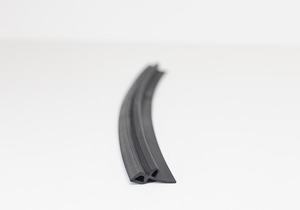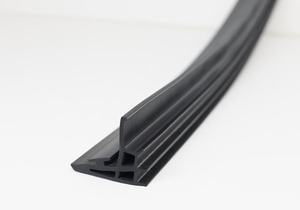Garage door seals, also known as weather seals or bottom seals, are essential components of garage door systems designed to provide weatherproofing, insulation, and protection against elements such as rain, snow, wind, dust, and pests. These seals are installed along the bottom edge of garage doors to seal gaps between the door and the floor, preventing air infiltration, water ingress, and debris accumulation. Garage door seals come in various types, materials, and configurations to suit different garage door styles and sizes, offering homeowners and commercial property owners effective solutions for maintaining a clean, dry, and comfortable garage environment.
Here’s an in-depth description of garage door seals:
- Material Composition: Garage door seals are typically constructed from durable and flexible materials such as rubber, vinyl, neoprene, or EPDM rubber. These materials are chosen for their resilience, weather resistance, and longevity, ensuring reliable performance in outdoor environments exposed to sunlight, temperature fluctuations, and moisture.
- Types of Seals:
- Bottom Seals: Bottom seals are installed along the bottom edge of the garage door to seal the gap between the door and the floor. They come in various profiles, including T-shaped, bulb-shaped, and J-shaped seals, which conform to different types of floor surfaces and door configurations.
- Side Seals: Side seals are mounted along the vertical edges of the garage door to seal gaps between the door panels and the door frame. They prevent air and water from infiltrating through the sides of the door, enhancing insulation and weatherproofing.
- Top Seals: Top seals, also known as header seals, are installed at the top edge of the garage door opening to seal gaps between the door and the header or lintel. They help prevent drafts, insects, and debris from entering the garage through the top of the door.
- Installation: Garage door seals are installed during the initial installation of the garage door or retrofitted onto existing doors. They are typically attached using adhesive backing, screws, or retainers, depending on the seal type and the door construction. Installation is straightforward and can be done by homeowners or professional garage door technicians.
- Sealing Performance: Garage door seals create a tight barrier between the door and the surrounding structure, effectively sealing gaps and preventing air leakage. They help maintain consistent indoor temperatures, reduce energy losses, and improve HVAC efficiency by minimizing heat loss in winter and heat gain in summer.
- Waterproofing: Garage door seals prevent water from seeping under the garage door during rainfall or snowmelt, protecting the garage interior from water damage, mold, and mildew. They feature a water-resistant design and may incorporate channels or grooves to divert water away from the door and toward drainage systems.
- Insulation: In addition to weatherproofing, garage door seals provide thermal insulation by reducing heat transfer between the garage and the exterior environment. This helps stabilize indoor temperatures, prevent cold drafts, and improve the overall comfort of the garage space, especially in regions with extreme weather conditions.
- Pest Prevention: Garage door seals act as barriers against pests such as rodents, insects, and snakes, which can enter the garage through gaps around the door. By sealing these gaps, garage door seals help keep pests out, protecting stored belongings, vehicles, and equipment from damage and infestation.
- Durability and Longevity: Garage door seals are designed to withstand repeated use, exposure to sunlight, temperature fluctuations, and mechanical stress. High-quality seals are resistant to cracking, tearing, and degradation, ensuring long-term performance and reliability even in harsh environmental conditions.
- Compatibility and Customization: Garage door seals are available in a variety of sizes, lengths, and profiles to accommodate different garage door sizes, styles, and configurations. They can be trimmed or cut to fit specific door dimensions and can be customized to match the color or finish of the garage door for a seamless appearance.
- Maintenance: Garage door seals require minimal maintenance to ensure optimal performance. Periodic inspection for signs of wear, damage, or deterioration is recommended, and damaged seals should be promptly replaced to maintain effective weatherproofing and insulation.
Applications of garage door seals extend to residential garages, commercial parking facilities, workshops, storage facilities, and industrial warehouses. They are essential components of garage door systems, contributing to energy efficiency, comfort, and protection for both residential and commercial properties.
Garage door gaskets play a crucial role in maintaining a dry, clean, and comfortable garage environment by sealing gaps, preventing water infiltration, insulating against temperature fluctuations, and keeping pests out. Their durable construction, weather resistance, and ease of installation make them indispensable accessories for any garage door system, enhancing its performance, longevity, and overall value.










